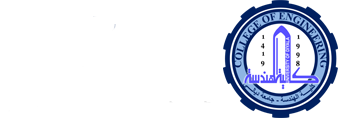:last Update
مختبر المعالج الدقيق
م انشاء المختبر في عام 1994 تحت مسمى مختبر المعالج ليحوى تجارب مختبرية حول المعالج الدقيق 8086 باستخدام بوردات وحواسيب نوعDELL وتم موخرا الاستعانة بالحواسيب عن طريق تنصيب برامج محاكاة لتعمل كمساعد فعال وناجح في تطبيق التجارب بطريقه مشابه للبورد واكثر سهوله وبتفاصيل مفهومه جدا للطالب , ولكي يكون الطالب قادر على تنفيذ التجارب المختبريه في حاسوبه الشخصي والتدرب عليها عندما يكون خارج المختبر
التجارب المختبرية
| الاجهزة المستخدمة | اسم التجربة | ت |
| FLT 86 + Multi-application board | initialisation | 1 |
| FLT 86 + Multi-application board | Read the Switches and output to the LED’s
| 2 |
| FLT 86 + Multi-application board | Simulate use of a Mechanical Press
| 3 |
| FLT 86 + Multi-application board | Traffic Lights | 4 |
| FLT 86 + Multi-application board | Using the Analoge Input from a Potentiometer
| 5 |
| FLT 86 + Multi-application board | To generate A sine Wave | 6 |
| FLT 86 + Multi-application board | Analogue Indication of a Digital Value
| 7 |
| FLT 86 + Multi-application board | Motor On/Off/Reverse
| 8 |
| FLT 86 + Multi-application board | To Maintain a constant Temperature
| 9 |
| FLT 86 + Multi-application board | To simulate Measurement and control of Lighting | 10 |
اجهزة المختبر:
| عمل الجهاز | وصف الجهاز | جهة الصنع | رمزه | اسم الجهاز | ت |
| Execute experiments with Multi-applications Board | The Flight 86 Trainer System is designed to simplify the teaching of the 8086 CPU and some of its commonly used peripherals
| United Kingdom | 20839 | Flight 8086 Microprocessor Trainer system | 1 |
| Execute experiment with Microprocessor emulater (emu8086( | DELL | China | Desktop computer | 2 | |
| Execute experiments with Flight 8086 Microprocessor Trainer system | Provide the user with the introduction to computer control | United Kingdom | 11/04250202 | Multi-applications Board | 3 |
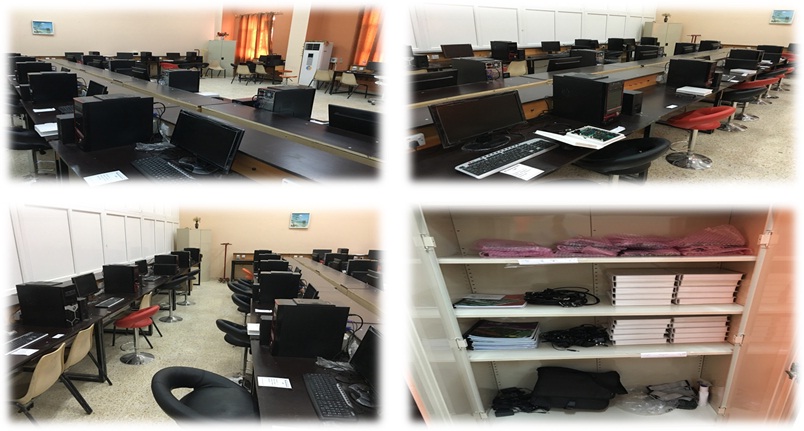
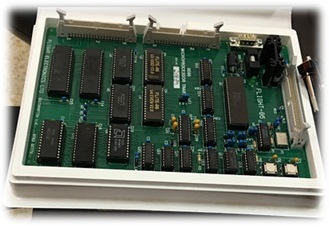
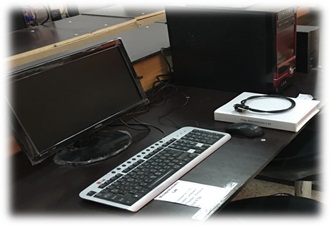
مختبر السيطرة
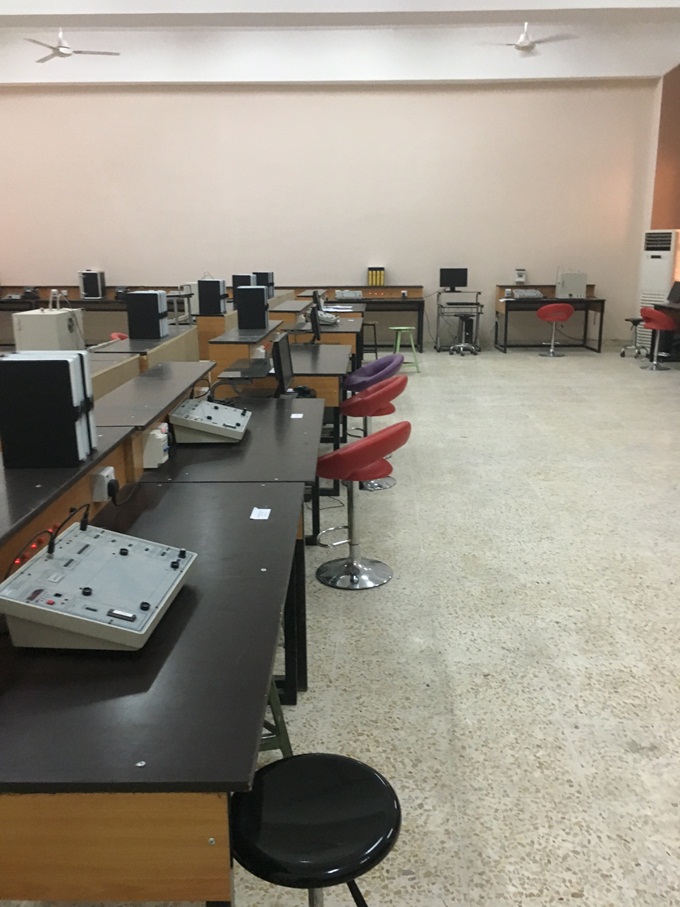 يعتبر مختبر السيطرة من المختبرات الرئيسية و المهمة بالنسبة لطلبة المرحلة الثالثة , حيث يقوم الطلبة بتنفيذ التجارب في الفصل الدراسي الاول والثاني ,منهاج المختبر يتكون من عشرة تجارب لكل فصل دراسي وقد أخذ بنظر الاعتبار تسلسل التجارب بما يلائم مع المادة النظرية التي يأخذها الطالب من حيث التسلسل المعلومات المعطاة لهُ لتكون مطابقة لمفردات منهج مادة السيطرة , يهدف هذا المختبر الى تمكين الطالب من اكتساب المهارات الأساسية ,حيث يتعرف الطالب من اكتساب المهارات الأساسية في كيفية بناء الانتقال(Transfer Function) باستخدام برنامج الماتلاب , حيث يتعرف الطالب في البداية كيفية التعامل مع البرنامج وكيفية استخدامه عملياً والتعرف على برنامج المحاكاة (Simulink library ) وربط دوائر السيطرة (closed loop ,open loop) والقوانين الأساسية مع كل نوع ,وايضاً تجري تجارب النظريات المعطاة في مادة السيطرة مثلاً : (State _ space & Block diagram reduction) اضافة الى تعليم الطلبة كيفية كتابة برنامج الماتلاب على صيغة ال m.file)) وايجاد النتائج من خلال الايعازات المباشرة وكيفية كتابة المصفوفات وايضا كيفية حل المعادلات المعقدة من خلال استخدام برنامج الماتلاب.
يعتبر مختبر السيطرة من المختبرات الرئيسية و المهمة بالنسبة لطلبة المرحلة الثالثة , حيث يقوم الطلبة بتنفيذ التجارب في الفصل الدراسي الاول والثاني ,منهاج المختبر يتكون من عشرة تجارب لكل فصل دراسي وقد أخذ بنظر الاعتبار تسلسل التجارب بما يلائم مع المادة النظرية التي يأخذها الطالب من حيث التسلسل المعلومات المعطاة لهُ لتكون مطابقة لمفردات منهج مادة السيطرة , يهدف هذا المختبر الى تمكين الطالب من اكتساب المهارات الأساسية ,حيث يتعرف الطالب من اكتساب المهارات الأساسية في كيفية بناء الانتقال(Transfer Function) باستخدام برنامج الماتلاب , حيث يتعرف الطالب في البداية كيفية التعامل مع البرنامج وكيفية استخدامه عملياً والتعرف على برنامج المحاكاة (Simulink library ) وربط دوائر السيطرة (closed loop ,open loop) والقوانين الأساسية مع كل نوع ,وايضاً تجري تجارب النظريات المعطاة في مادة السيطرة مثلاً : (State _ space & Block diagram reduction) اضافة الى تعليم الطلبة كيفية كتابة برنامج الماتلاب على صيغة ال m.file)) وايجاد النتائج من خلال الايعازات المباشرة وكيفية كتابة المصفوفات وايضا كيفية حل المعادلات المعقدة من خلال استخدام برنامج الماتلاب.
واخيراً تجرى تجارب مختبر السيطرة وكيفية التعامل مع كل تجربة و رسم الموجه الخارجة وكيفية قياس الزمن و بالتالي معرفة سرعة استجابة النظام لكل تجربة ومعرفة جميع المؤثرات من خلال تغيير قيمة المتغيرات للدالة وبهذا يكون طالب المرحلة الثالثة قد تعرف على مختبر السيطرة بشكل كامل وتأثير كل متغير على قيمة الناتج وربطه مع مادة النظري ليحصل الطالب على صورة كاملة تربط النظري مع الحياة العملية
التجارب :
- 1-1_Unit step function
- 1-2_Unit impulse function
- Transfer function for :
- 2-1_ open _loop system
- 2-2_ closed _loop system
- State _ space representation of control system
- Block diagram reduction :
- 4-1 _series
- 4-2_ parallel
- 4-3_feed back
- Response of first _ order system
- Response of second _ order system
- Time domain analysis of control system:
- 7-1_ transient response
- 7-2_ steady state
- Stability of system by root locus method
- 8-1_ part A
- 8-2_part B
- Frequency response analysis
- 9-1_Bode diagrams or logarithmic plots
- 9-2_Nyquest stability criterion
- Compensator designed by frequency response
- 10-1_ Lead compensator
- 10-2_Lag compensator
مختبر التشفير
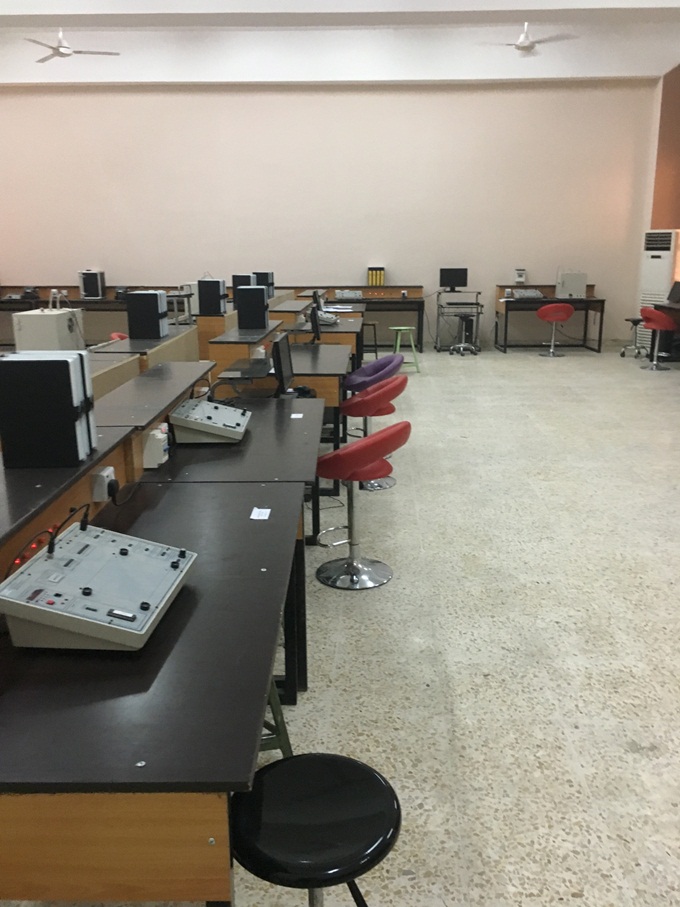
يعتبر مختبر التشفير من المختبرات الرئيسية و المهمة بالنسبة لطلبة المرحلة الرابعة , حيث يقوم الطلبة بتنفيذ التجارب في الفصل الدراسي الاول والثاني ,منهاج المختبر يتكون من عشرة تجارب لكل فصل دراسي وقد أخذ بنظر الاعتبار تسلسل التجارب بما يلائم مع المادة النظرية التي يأخذها الطالب من حيث التسلسل المعلومات المعطاة لهُ لتكون مطابقة لمفردات منهج مادة التشفير وامنية المعلومات , يهدف هذا المختبر الى تمكين الطالب من اكتساب المهارات الأساسية ,حيث يتعرف الطالب من اكتساب المهارات الأساسية في كيفية حماية البيانات(Data Protection) باستخدام برنامج الماتلاب , حيث يتعرف الطالب في البداية كيفية التعامل مع البرنامج وكيفية استخدامه عملياً والتعرف على برنامج المحاكاة (Simulink library ) وطريقة تنفيذ التجارب والخوارزميات والقوانين الأساسية مع كل نوع ,وايضاً تجري تجارب النظريات المعطاة في مادة التشفير كخوارزميات القيصير والبلي فير والفيجينير وغيرها من الخوارزميات المهمة اضافة الى تعليم الطلبة كيفية كتابة برنامج الماتلاب على صيغة ال m.file)) وايجاد النتائج من خلال الايعازات المباشرة وكيفية كتابة المصفوفات وايضا كيفية حل المعادلات المعقدة من خلال استخدام برنامج الماتلاب.
واخيراً تجرى تجارب مختبر التشفير وامن المعلومات وكيفية التعامل مع كل تجربة و كيفية حماية انواع البيانات المختلفة من قواعد البيانات وانظمة التشغيل وشبكات الحاسوب وبهذا قد تعرف الطالب على مختبر التشفير بشكل قيمة الناتج وربطه مع مادة النظري ليحصل الطالب على صورة كاملة تربط النظري مع الحياة العملية
التجارب
- 1-1_classic cryptography systems
- 1-2_modern cryptography systems
- Implementation and analysis of Ceaser and shift ciphers
- Implementation and analysis of play fair ciphers
- Implementation and analysis of Vigenere cipher using table and without it
- Implementation and analysis of Mixed Alphabet ciphers
- Implementation and analysis of DES cipher
- Implementation and analysis of RC4 and RC5 ciphers
- Implementation and analysis of Blowfish ciphers
- Implementation and analysis of AES cipher
- Implementation and analysis of public key algorithms
Data Structures LAB
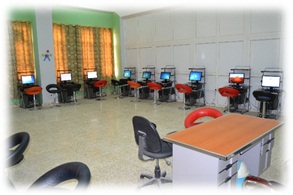 How to store a collection of objects in memory, what operations we can perform on that data, the algorithms for those operations. How do we organize information in computer memory so that we can find, update, add, and delete portions of it efficiently.
How to store a collection of objects in memory, what operations we can perform on that data, the algorithms for those operations. How do we organize information in computer memory so that we can find, update, add, and delete portions of it efficiently.
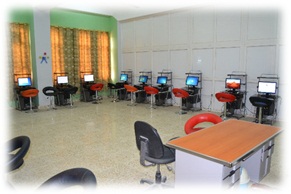

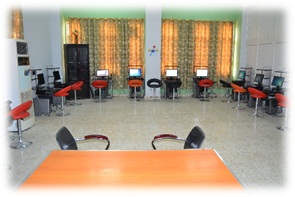
- Implement examples of data structures
- Array Concept, implementation of one, two, three – Dimensional Array
- Linear List, Types of Linear List
- Stack, Array Representation of Stack, Stack Algorithms, Stack Application, Record Representation
- Queue, Array Representation of Queue, Queue’s Subprograms, Record Representation, Queue Applications
- Circuit Queue (CQ), Double Ended Queue
- Pointers, Linked List, Linked Stack, Linked Queue, Circular Linked List, Double linked List
- Graph Data structure
- Tree structure, Binary Tree, Tree Traversing, Trees Representation, General Tree,
- Binary Tree, Representation of Arithmetic Expression using Binary Tree, Tree Transformation, Binary Search Tree
- Heap Sort, Selection Sort
C++ Programming Laboratory
 Programming in C++ laboratory is the basis and most important for the student in first stage. In C++ laboratory, students are writing and performing various of programs by using CodeBlocks IDE, which is considers specialist IDE for writing programs in c and C++. The laboratory also contains enough number of computers that are high quality and equipped with all programs required for the scientific subject. C++ is a middle-level programming language developed by Bjarne Stroustrup starting in 1979 at Bell Labs. C++ runs on a variety of platforms, such as Windows, Mac OS, and the various versions of UNIX. This Laboratory adopts a simple and practical approach to implement the concepts of C++
Programming in C++ laboratory is the basis and most important for the student in first stage. In C++ laboratory, students are writing and performing various of programs by using CodeBlocks IDE, which is considers specialist IDE for writing programs in c and C++. The laboratory also contains enough number of computers that are high quality and equipped with all programs required for the scientific subject. C++ is a middle-level programming language developed by Bjarne Stroustrup starting in 1979 at Bell Labs. C++ runs on a variety of platforms, such as Windows, Mac OS, and the various versions of UNIX. This Laboratory adopts a simple and practical approach to implement the concepts of C++
التجارب
- Editing, compiling and executing a simple program
- Variables and constants
- Assignment of variables
- Simple input and output
- Control StatementsDecisions
- Control StatementsLoops
- Functions
- Arrays
- Reading and writing to files
- Project
Software Engineering Lab (Visual Basic)
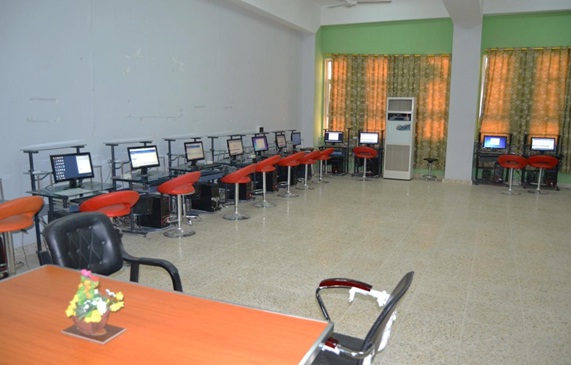 Visual Basic is a great programming language; it is able to create very advanced programs. One of the best ways to get ideas for your programs and also learn how to develop them is by learning how other full applications are created. Most business applications interface with databases to store and retrieve information. It is one of the easiest languages to use for database programming. There are many date and time functions in VB. You can use these functions to compare dates and times, store date and times, and manipulate date and time variables. These VB tutorials show you how to use all the tools Visual Basic gives you to work with dates and times. If you want a program to be able to keep track of information between each time it is run you have to store it somewhere. One of the primary ways to store information is by saving it to a file and then reading it out the next time your program runs. These tutorials show you how to save and read data from files. Use them to save information or to create your own better Notepad program in VB
Visual Basic is a great programming language; it is able to create very advanced programs. One of the best ways to get ideas for your programs and also learn how to develop them is by learning how other full applications are created. Most business applications interface with databases to store and retrieve information. It is one of the easiest languages to use for database programming. There are many date and time functions in VB. You can use these functions to compare dates and times, store date and times, and manipulate date and time variables. These VB tutorials show you how to use all the tools Visual Basic gives you to work with dates and times. If you want a program to be able to keep track of information between each time it is run you have to store it somewhere. One of the primary ways to store information is by saving it to a file and then reading it out the next time your program runs. These tutorials show you how to save and read data from files. Use them to save information or to create your own better Notepad program in VB
التجارب
Description | Program Name |
In this Experiment we will learn about Visual Basic windows ●Create new projects. ●Learn about forms ●Add controls from toolbox ●Save our work | Visual basic forms and controls |
| Variables |
| Conditional Logic |
| Loops |
| Arrays |
| Dates and Times |
| Strings |
| Object Oriented Programming |
| Access Databases |
| Files |
مختبر أسس الهندسة الكهربائية
يعتبر هذا المختبر من المختبرات الرئيسية و المهمة بالنسبة لطلبة المرحلة الاولى , تجرى تجارب هذا المختبر في الفصل الدراسي الاول والثاني ,منهاج المختبر يتكون من عشرة تجارب لكل فصل دراسي وقد أخذ بنظر الاعتبار تسلسل التجارب بما يلائم مع المادة النظرية التي يأخذها الطالب من حيث التسلسل المعلومات المعطاة لهُ لتكون مطابقة لمفردات منهج مادة أسس الهندسة الكهربائية , يهدف هذا المختبر الى تمكين الطالب من اكتساب المهارات الأساسية ,حيث يتعرف الطالب من اكتساب المهارات الأساسية في كيفية بناء الدوائر الكهربائية البسيطة وكيفية استخدام أجهزة الفحص والقياس الاساسية, حيث يتعرف الطالب في البداية كيفية التعامل مع اجهزة قياس فرق الجهد والتيار والمقاومة وكيفية استخدامها عملياً والتعرف على تطبيق قانون أوم وانواع ربط الدوائر الكهربائية (ربط التوالي , ربط التوازي, الربط المختلط) والقوانين الأساسية مع كل نوع ,وايضاً تجري تجارب النظريات المعطاة في مادة الاسس مثلاً : ( Kirchhoff’s Laws, Thevenin’s & Norton’s Theorems , Superposition Thorem)
واخيراً تجرى تجارب دوائر التيار المتناوب وكيفية التعامل مع الاجهزة راسم الموجه الاوسيلوسكوب
وكيفية قياس التردد وزاوية الطور باستخدام هذا الجهاز وبهذا يكون طالب المرحلة الاولى قد تعرف على مبادئ الاساسية التي يحتاجها مهندس الكهرباء في الحياة العملية
التجارب
- DC Voltage & current Measurement
- Using an Ohmmeter & Resistor Characterisitics
- Ohm’s Law
- Power in DC Circuit
- Series-Parallel Network
- Kirchoff’s Law
- Superposition Theorem
- Thevenin’s and Norton’s Theorems
- Maximum Power Transfer Theorem
Digital Electronic
This lab the electronic workbench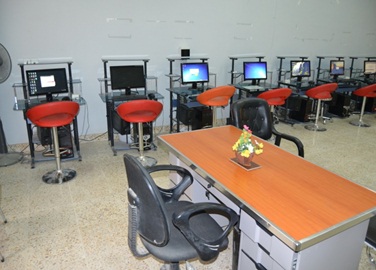 program is also used to perform all experiments and simulation programs. These programs are important to solve all computation problems such as counters and flip ftops and others.
program is also used to perform all experiments and simulation programs. These programs are important to solve all computation problems such as counters and flip ftops and others.
Aims to make the student knew the electronic workbench language in general & perform most of it function such as simplifications
Compuation Engineering
and simulation programs. These programs are important to solve all computation problems such as definitional equation, z transform, laplas transform.
Aims to make the student knew the matlab language in general & perform most of it function such as for, it, while and others
مختبر الذكاء الاصطناعي
لغة البرولوج لغة قديمة نسبيا ظهرت في سبعينيات القرن المنصرم وبالرغم من ذلك فإنها مازالت تحتفظ بقدراتها حتى هذه اللحظة . وظل استخدام لغة البرولوج محصورا في معامل أبحاث الذكاء الاصطناعي بقارة أوروبا حتى أكتوبر 1981 عندما أعلن اليابانيون أن لغة برولوج ستكون اللغة الرئيسية لحاسبات الجيل الخامس
والى الان لم تكتسب لغة البرولوج قبولا وانتشارا تجاريا واسعا في امريكا٬ ويرجع ذلك لسببين: الأول هو صعوبة اتصالها باللغات التقليدية مثل لغة فورتران والثاني هو بطىء برامج البرولوج في طور الإنتاج.
C++ ٬Java٬ .net وتعتمد لغة البرولوغ في الأساس على العلاقات المنطقية بين الأشياء٬ لذا كونك مبرمج تطبيقات اخرى ك
٬ لايعني انك ستجد ما تعلمته من اللغات السابقة في لغة البرولوج٬ الموضوع مختلف جذريا لكنه سهل وبسيط.
التي نعرفها . Database وهي تختلف عن قاعدة البيانات Information Base في هذه اللغة يتم انشاء قاعدة المعلومات .Visual prolog النسخة المعتمدة هي
التجارب
- Data Type used in Prolog, Program Sections, Facts and Rules
- With examples
- Variables, Internal Goal and External Goal, Running, Tracing and Backtracking With examples
- Cut and Fail with Backtracking, Input and Output Commands
- With examples
- Main Rule and Sub rules, Passing parameters between Rules
- With examples
- Recursive ,Building Conditional statements, Solving Summation problems With examples
- Solving Products Problems, String Standard Predicates With examples
- Examples about string, List and Important Operations in list With examples
- Examples about relation
- Examples about string
- Examples about List
- Learning instructions about robot
- Learning how to programming game of puzzle
مختبر سيطره بالحاسبه
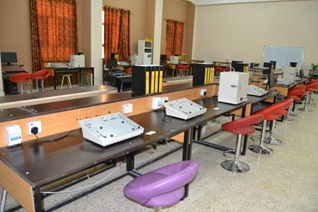


التجارب
- HUMIDITY SENSOR
- AD590 TEMPERATURE TRANSDUCER
- D/A AND A/D CONVERTERS
- CHARACTERISTCS OF SENSORS
- TYPE OF ROBOTS
- CONFIGURATION & CH/ CS. OF THE INTELLI
